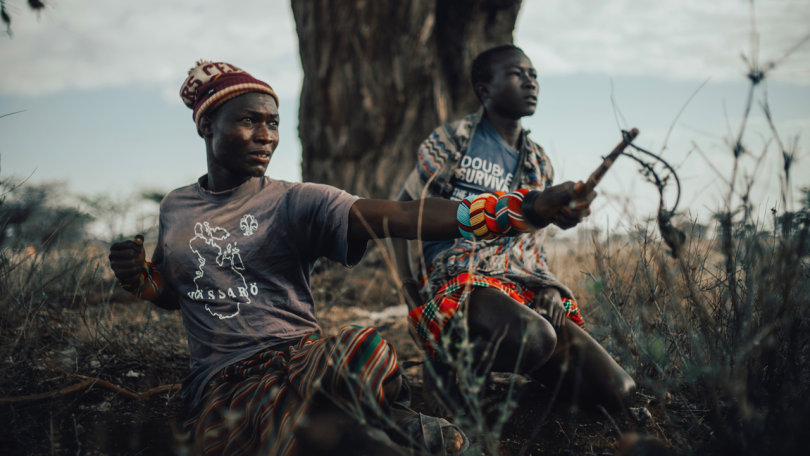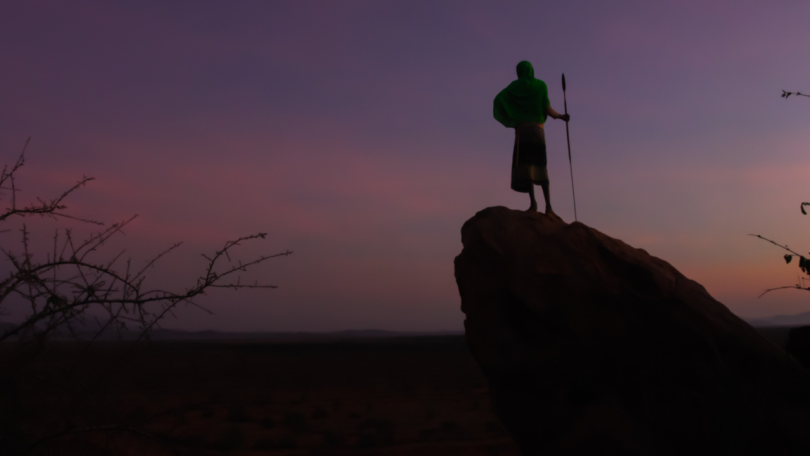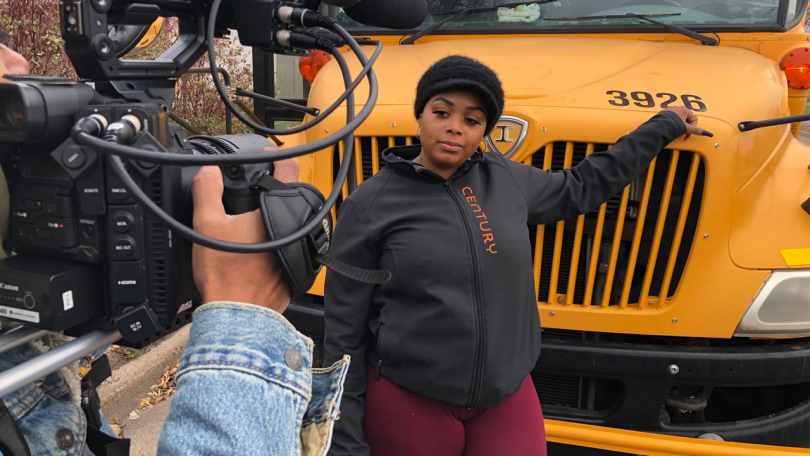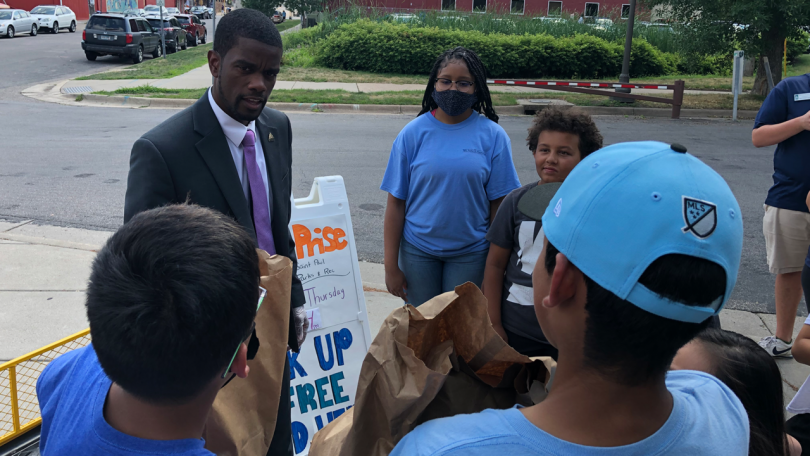
Tribeca Festival 2023 was held from June 7-18, with an extension to July 2 through the Tribeca at Home online platform. The films presented included 109 feature films from 127 filmmakers and 36 countries, with 93 world premieres, 43 first time directors, and 53 documentaries depicting a broad spectrum of sociopolitical issues, including spotlights on the Ukraine and Iran. Short films were selected from a record number of 8,096 submissions and of them 76 selected shorts were presented in 12 short film programs, produced by 91 filmmakers from 48 countries and included 48 world premieres.
As articulated by Tribeca Festival Director and VP of Programming Cara Cusumano, “We are bringing to New York eye-popping 3D films and rousing music docs, white-knuckle thrillers and knee-slapping comedies, independent edge and old Hollywood glamour. And as potent as the work is on-screen, we are equally excited to ‘plus up’ the moviegoing experience off-screen with an incredible line up of live experiences in Spotlight+”. The festival has evolved to provide its audience with a comprehensive holistic experience through its story telling approach, immersive lineups, coverage of sociopolitical issues, all genres of film making, an embrace of the entertainment function of films, incorporation of the old while introducing new audio-visual technologies, and emphasizing live experiences. Tribeca 2023 continues keeping the visual door open to a larger audience through the Tribeca post festival screening platform.
The 2023 edition of the Tribeca Festival, now in its 22nd year, was presented by OKX, a crypto currency exchange, with support from numerous partners including but not restricted to AT&T, CHANEL, City National Bank, Novartis, The Wall Street Journal, Variety, and public agencies.

BETWEEN THE RAINS, Kenya 2022, a documentary co-directed by Andrew H. Brown and Moses Thuranira had its world premiere at the Tribeca Festival 2023 and received awards for Best Documentary Feature and Best Cinematography. Filmed over a period of four years in Northern Kenya alongside the Turkana-Ngaremara community, during a period in which it has suffered from a drastic decline of rainfall, this outstanding production provides superb visual insights into the real impacts of climate change.
BETWEEN THE RAINS reveals how a years-long draught threatens the survival of the tribal community, destroying the socio-economic basis of the herding economy and traditional culture. Enmeshed in the community, the directors and producers of the documentary present community perspectives and refrain from the kind of editorializing frequently found in documentaries about environmental issues. A Shaman inspects intestines to intuit the future and advises that harmony with nature and rain will be restored if traditions are retained. Some members of the community think that the soil has died, that the tribe’s life will end, and that customs have become obsolete. The absence of rain overpowers the reality of the tribe, but most understand the calamity through the context of traditions. As articulated by Kolei, who is at the center of the documentary, “Nature is the only power that can destroy us”. Kolei also insists, though questioning their future, when speaking to his younger brother Patrick, that herding is their only way of life and that becoming a warrior is Patrick’s fate. Over the long periods the documentary covers, the Turkana-Ngaremara community, and the family of Kolei and Patrick, face constant conflicts. Their herds are thinned out by the absence of water and rustling of their stock by a hostile tribe from across the river. The apparently well-armed members of the Yukana tribe cannot offer an effective defense nor can the rarely present soldiers protect them. The audience experiences many traditional rituals of the village and its members, from dance, music, animal sacrifices for the gods, and celebrations which seem to be as important to them as the concern with the threat of the drought. Grazing of the herds in the lands of a hostile tribe across the river would result in more violent armed tribal conflicts. The Shaman suggests that defeat of the enemy may restore harmony with nature and bring rain back.

BETWEEN THE RAINS is an important documentary. The close collaboration with the village ensured that the filmmakers portrayed a fully grounded vision of the Turkana-Ngaremara community despite the climate crisis confronting them. During the first production year, there was no filming because all members of the crew spent considerable time with the 172 members of the village. Except for Brown, producers and directors came from the same Turkana tribe with an identity shaped by that background. Co-director Moises Thuranisa was a trained journalist and community organizer, and his collaborator the American Andrew Brown lived and worked for a decade in sub–Saharan Africa and spent several years in Kenya. Outstanding cinematography, frequent handheld filming in close ups or wide range shots, night and daytime filming, and the incorporation of many unscripted sequences and events transformed BETWEEN THE RAINS into a rare, exquisite example of a model documentary. The documentary is devoted to the over 34 million pastoralists living in East Africa.

THE GULLSPANG MIRACLE, Maria Fredriksson, feature documentary, Norway Sweden, 2022 is an extraordinary documentary world premier unraveling the secrets of an extended family based in Norway and Sweden. Two women from Norway, Kari and May, avowed sisters, purchase an apartment in Sweden and discover that the owner of the apartment, Olaug, is apparently identical with their older sister Astrid who killed herself many years ago. Kari states that Olaug is her diseased sister sitting in front of her, a miracle. Olaug, the seller was also known as Lita, the nickname of Astrid. Kari and May see divine touches. They then hire Maria Fredriksson to direct a film about their family. What was supposed to be a harmonious exploration of a family history develops into an exploration of mutually sustained deceptions, forged documents, and DNA analysis of all members of the family. Much of the film’s persuasive power comes from Fredriksson innovative use of the records of the principles of the film from infancy to old age, including photos, home videos, and relevant objects. They are included throughout the film, permitting audiences to track and possibly identify the characters. This is not an easy task since the story has surprising mutation and the apparent fixed identities of the characters in the beginning of the film are not what they seem to be. THE GULLSPANG MIRACLE does not have an easy storyline an audience can predict nor does not follow linear logic or suggest a solution to the mysteries uncovered. Virtually all active principles are females and most of the few males filmed are passive.
Meeting her large family after an absence of many years from the farm, Kari finds out that she was part of a set of identical female twins born in 1941. Some old members claim that one was stillborn, but Kari learns from others that she was smuggled out that night and eventually adopted by another family growing up in a healthy setting. She had to be separated from her sister and family because the Germans occupying Norway were looking for twins. Thus, her birth records were fake. When Kari suspects that the stone walling of her hyper religious family hides other mysteries, she starts an investigation and focuses on the alleged suicide of her twin sister who stopped living with the family. As a highly educated individual with a military background, she does not accept the prevailing silence and examines thirty year old police records, interviews Lita’s son Roger, and identifies a witness who was at the place of the alleged drug induced suicide. It turns out that the police investigation found no traces of drugs at the location if the alleged suicide or in her blood, and that no evidence of a heart attack as claimed by the family. A question mark was entered next the police record “cause of death”. Lita’s son Roger recalls that his mother had a fallout with her family and that she was incapable of suicide. Lastly the only witness still alive told Kari that Lita had been sitting in a car and that some other person was present. Being rigorous, Kari had DNA tests made of her and her family which showed no genetic connections between her and the family. Other evidence Kari collected suggested that Lita was murdered though that option is not discussed. The audience must wait for another director to cover that link. Fredriksson’s mystery documentation is a stunning addition to the Tribeca 2023 program and was recognized with the award for Best Editing of a documentary feature.

IT’S BASIC, USA, 2023, by Marc Levin, is a feature documentary, world premiering at Tribeca which explores Guaranteed Basic Income. Providing a small amount of Guaranteed Basic Income (GBI) has become an objective for a growing number of city and county politicians in the United States. In a period of economic instability and rising poverty, the concept of GBI has been embraced and implemented on small scales that exceed promises never enacted before. President Lyndon Johnson declared in his 1964 State of the Union, “I shall propose to help more Americans with income too small to even meet their basic needs…to do this we must help the pool, with a war on poverty”. Martin Luther King Jr. equated the struggle for Civil Rights with a fight for higher income and the racial wealth gap is as wide today as it was in 1968. In the time since, conservative Presidents like Nixon and supposedly liberal ones like Clinton have enacted policies reducing support for low or no-income groups in the United Stets. The dramatic reduction of discretionary funds and remedial initiatives was engineered by Republicans and cooperating Democratics through an unparalleled reduction of corporate and high-income personal income taxes and remains a goal for most Republicans. The tax breaks for the wealthy now amount to an estimated $630 billion. IT’S BASIC provides other data accounting for the contemporary rise of the small GBI movement. The US is the largest economy in the world but more than 60% of all working Americans live from paycheck to paycheck and do not have the stability of reserve funds if losing their jobs or struck by a major illness. The cost of living rose more rapidly in 2022 than any time in the past 40 years. Since 1985, rent has increased four times faster than the income of American workers.

IT’S BASIC provides a case study of more than 100 cities and counties which have established pilot community centric GBI programs. The movement was started in 2017 by Michael D. Tubbs, the mayor of Stockton in California who also set up the Mayors for Guaranteed Income association. It has grown to 100 funded pilot programs throughout the USA to meet the exploding demand for a time restricted small GBI as of the end of 2022. There are variations, but most pilot programs offer a monthly payment of $500 for a year. Research reveals that the payments are used for survival items like rent support, food, medicine, and caregiving (and close to nothing for liquor and cigarettes). IT’S BASIC includes case histories of individuals from five cities who joined the program from all walks of life, both single or in partnerships, as well from different age and ethnic groups. They are using the funds for essential survival items, continued education, housing and childcare. 2021 CAMBRIDGE RISE pays $500 for 18 months on a random basis to 130 families. Cambridge also set aside $22 million for families living under the poverty level. LA LEAP started in January 2022, giving 3,200 residents $1,000 a month for one year. Los Angeles County had recorded 70,000 homeless people in the same year. St. Paul City developed the first basic pay program for refugees. After its establishment in Illinois Cook County near Chicago, 233,000 people applied to enter its GBI program. Gainesville, Florida set up the JUST INCOME project for former incarcerated residents with a budget of $1,000 for the first month and $600 a month for the next eleven. Individuals leaving prison there just received a $50 debit card.
When the support ends there is a difficult adjustment period, but the GBI programs provided their recipients an essential survival bridge to a more manageable future. It certainly does not solve American economic disparity and low-income/no-income problem. The Basic Income Initiatives help but cannot compensate for a dormant war on poverty.
Claus Mueller
New York, New York
filmexchange@gmail.com
Monica has a BA in Journalism and English from the University of Massachusetts and an MS in Journalism and Communications from Quinnipiac University. Monica has worked as a journalist for over 20 years covering all things entertainment. She has covered everything from San Diego Comic-Con, The SAG Awards, Academy Awards, and more. Monica has been published in Variety, Swagger Magazine, Emmy Magazine, CNN, AP, Hidden Remote, and more. For the past 10 years, she has added PR and marketing to her list of talents as the president of Prime Entertainment Publicity, LLC. Monica is ready for anything and is proudly obsessed with pop culture.












